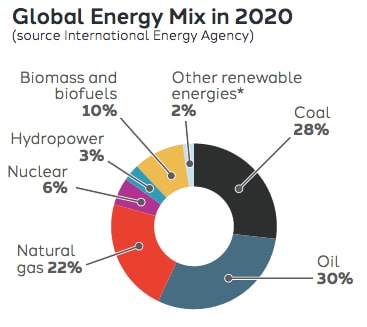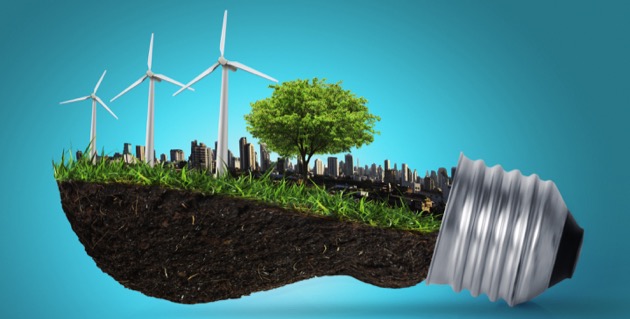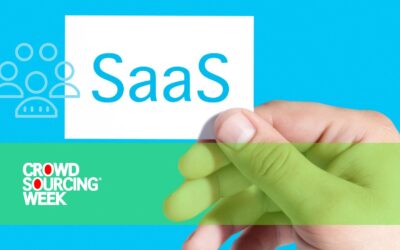The benefits of a move away from relying on carbon/fossil fuels are well documented. Various forms of increasing worldwide devastation that are the evident impact of climate change and global warming – droughts, wildfires, floods, powerful tropical storms, climate shifts that reduce crop yields, polluted drinking water – drive the accelerating development of alternative and sustainable energy sources. Improving technology is also empowering end-user citizens to create their own decentralized energy, and not only reduce their reliance on major energy corporations but also to sell them their surplus.
This is the first of two articles on energy sustainability and decentralization. Although the International Energy Agency expects fossil fuels to still account for 80% of global energy consumption in 2020, some countries are making good progress. Sweden, the location of our next conference in March 2018, announced in 2015 it intends its electricity production to be fossil-free by 2040, and in 2016 57% came from renewable sources.
 Even though Germany sits on a 200 year supply of lignite, a form of coal which currently fuels 25% of the country’s electricity production, the government has set renewable energy production targets of a minimum 40% by 2025 and 80% by 2045. The UK government is consulting on closing the country’s coal-fired power stations by 2025.
Even though Germany sits on a 200 year supply of lignite, a form of coal which currently fuels 25% of the country’s electricity production, the government has set renewable energy production targets of a minimum 40% by 2025 and 80% by 2045. The UK government is consulting on closing the country’s coal-fired power stations by 2025.
Decarbonization, however, is just one aspect of a three-part global energy trilemma, along with security of supply and affordability. Perhaps we should recognize a valid fourth element in some countries that is for national governments to be seen by voters as doing at least their fair share of safeguarding the environment.
“Renewable energy sources are set to represent almost three quarters of the $10.2 trillion the world will invest in new power generating technology until 2040, thanks to rapidly falling costs for solar and wind power, and a growing role for batteries, including electric vehicle batteries, in balancing supply and demand.”
Source: Bloomberg’s New Energy Outlook 2017 report
The security of supply issue means that governments should ensure there is adequate electricity available to meet day-to-day public and industry requirements, and that there is a backup available for emergencies. So they set electricity supply companies firm performance targets. Reliability of supply was seen as an Achilles heel for renewables, since wind turbines need wind and solar panels need sun. This gave electricity companies an added challenge to have enough capacity to avoid weather-related supply shortages, and also avoid producing too much at any time since electricity has always been difficult to store.
The most widespread example of electricity storage was to use it to pump water in hydroelectric plants uphill so it can drop back through the turbines time after time until end-users want the electricity it produces. Hydropower, though, will still be only 3% of global energy in 2020 and other storage methods are being developed including lithium-ion and flow batteries, flywheels, heat exchanges and compressed air.
 At a personal level, end-user homeowners have greater flexibility. They can take a feed from their domestic, sustainably sourced electricity when they want it and reduce the energy they buy through the main grid, with the security that the grid will always be there when they can’t produce their own power. This is known as ‘partial grid defection’, and the people producing as well as consuming electricity are prosumers.
At a personal level, end-user homeowners have greater flexibility. They can take a feed from their domestic, sustainably sourced electricity when they want it and reduce the energy they buy through the main grid, with the security that the grid will always be there when they can’t produce their own power. This is known as ‘partial grid defection’, and the people producing as well as consuming electricity are prosumers.
Battery storage is entering a dynamic period and prices are dropping faster than expected. Advances in battery technology and affordability now enable prosumers to more easily and cheaply store power they generate for use at other times, and when they generate enough to operate free of the main grid they become ‘full grid defectors’. These people, currently most commonly found in Australia and Hawaii, could perhaps become serious energy industry disruptors if they grow in number and their output can be brought together.
In the meantime, the emergence of prosumers who generate their own electricity is what most people mean when they talk of energy decentralization. Yet these prosumers can usually only sell their surplus power back to the mainstream electricity industry as decentralization has hardly touched power distribution. Under the present system in most countries, prosumers are largely unable to sell their power more directly to neighbors or their local community as legislation protects main grid monopolies and the interests of the energy corporations. Decentralization of distribution requires greater support from legislators. We will return to this in Part 2.





0 Comments